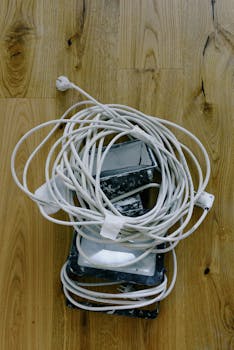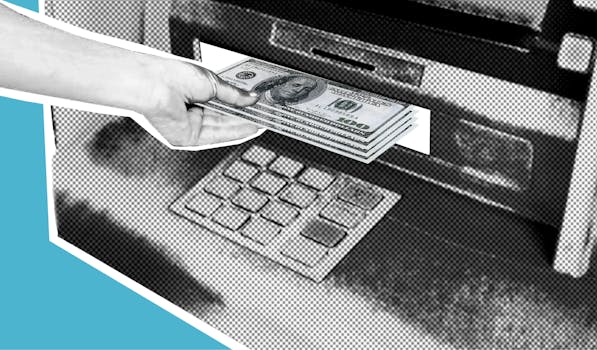Money Management
Best Budgeting Apps for Every Type of Saver: Find Your Perfect Match
Explore the best budgeting apps, with tailored tips that match your style. Unlock specific features, actionable routines, and expert insights for confident saving—find your perfect money management match now.
Advertisement
Savvy financial choices usually start with a simple habit: tracking where your money goes. Many folks mention budgeting apps before sharing the tricks that truly keep their wallets in check.
Personal finance isn’t a one-size-fits-all deal. Different lifestyles, spending patterns, and savings goals mean unique approaches win out. Technology makes it far easier to spot those patterns and adjust on the fly.
Dive into this guide and meet the top budgeting apps for any kind of saver. Learn how specific features blend with your everyday routines for lasting financial growth.
Choose the Right App To Match Your Saving Style
Picking the best budgeting app gets smoother once you map your saving habits to the tools that boost them. Aligning tech with your real-life goals gives you a big advantage from day one.
For instance, suppose you’re a careful planner who enjoys seeing every penny categorized. Or maybe you just want an effortless way to split expenses and set reminders for bills.
Direct Integration Means Fewer Mistakes to Fix
Direct bank integration changes budgeting from manual hassle to seamless tracking. When your transactions pull in automatically, you spend less time entering data and more time making decisions.
Picture a friend who logs into their budgeting app and immediately sees their updated bank balance. Their face relaxes, and they mention, “No need to wonder—every transaction’s already loaded.”
Apps that support linking with most U.S. banks, credit card companies, and even investment accounts increase accuracy. You cut down on errors and stay on track without the usual tedium.
Custom Alerts Help You React Fast
Customizable push notifications deliver spending updates straight to your phone. Maybe you’re met with an alert right after eating out, prompting, “You’re close to your dining budget.”
This type of timely heads-up can feel like a gentle tap on the shoulder. Instead of vague guidance, you get a clear nudge to course-correct without delay.
Set alerts for approaching goals, suspicious activity, or pending bills. You’ll stay ahead of overspending and prevent missed due dates that torpedo your savings progress.
| App Name | Best For | Key Feature | What To Try Next |
|---|---|---|---|
| YNAB | Detailed planners | Envelope-style budgeting | Connect your main bank and split categories |
| Mint | Hands-off users | Automatic account syncing | Activate bill alerts and daily summaries |
| Goodbudget | Shared budgets | Virtual envelopes | Set up envelopes for shared expenses |
| PocketGuard | Quick check-ins | In My Pocket calculation | Test ‘safe to spend’ on daily coffee runs |
| EveryDollar | Zero-based focus | Custom goal planning | Map out your month’s key expense priorities |
Map Out Categories to Reflect Real-Life Spending
Splitting expenses into categories helps you track progress and cut clutter in your records. Smart budgeting apps let you label transactions for useful, real-world insight—not just textbook labels.
Revisit last month’s grocery trips or gas stops using app-based reports. Coloring or sorting transactions lets trends jump out fast, so you build budgets that actually mirror your habits.
Edit Categories for Personalized Results
Modify default labels to match how you talk about money at home. Change “Dining Out” to “Date Nights” or “Treats” to better fit your situation and reinforce your values each time you record a purchase.
When categories echo language you use in conversations, it’s easier to recall details and spot opportunities for change. Consider combining a few categories or splitting one out for deeper focus.
- Consolidate recurring expenses into one group for easy review and fewer forgotten bills.
- Label infrequent purchases with timing (e.g. “Holiday Only”) to track seasonal spending and adjust future budgets accordingly.
- Name savings buckets after goals—“Beach Trip Fund” rather than “Travel Savings”—to boost motivation with every deposit.
- Separate needs from wants for honest review. For example, log “Work Lunch” as a need, but “Takeout Friday” as a want.
- Document shared expenses with initials, making it clear who spent what and when for transparent household finances.
Keep your labeling approach consistent in the budgeting app to save analysis time at month’s end. Personalizing turns bland transaction logs into a meaningful spending snapshot.
Use Recurring Transactions to Simplify Tracking
Set up automatic recognition for routine payments like rent, subscriptions, and loan installments. By logging repeating charges in advance, you keep your spending picture up-to-date with less work each week.
Move recurring transactions into their own budget section if you’d like a bird’s-eye view exclusively for mandatory bills. This helps you spot extra cash before you reallocate funds.
- Mark mortgage, utilities, and insurance due dates to ensure critical bills never slip through the cracks.
- Automate gym membership dues and streaming subscriptions for precision, then pause billed items if a price jumps unexpectedly.
- Assign regular transfers to savings or investment accounts, encouraging automatic growth even during quiet months.
- Link payday cycles with major bill clusters so you avoid accidental overdraft and maintain clear timing for payments.
- Add calendar reminders for any annual expenses, such as car registration or club fees, so periodic bills get equal attention as monthly ones.
Relying on well-programmed recurring transactions saves time and shows a realistic surplus or shortfall day by day. Smart setup builds trust in your own budget numbers.
Track Shared Expenses and Group Goals Thoughtfully
Budgeting apps can solve the classic headache of splitting shared costs within families, friend circles, or roommates. Tension shrinks when you know exactly who paid for pizza, groceries, or household utilities.
Some apps let you invite trusted users to join a “household” or “group” account, assigning transactions or splitting payment lines. Alerts confirm when everyone’s settled up, closing the loop on awkward follow-ups.
Create Crystal-Clear Expense Splits
Use menu features to divide amounts by person or assign expenses by color-coding. Enter how much each party paid and mark when reimbursement is complete, so nothing falls through the cracks.
A roommate might snap a photo of a utility bill, upload the receipt, and tag each friend. Everyone gets an alert: “$22.40 due for electric—two days left to pay.”
This removes mental scorekeeping and lets casual spoken deals—like “I’ll get coffee, you grab lunch”—become cleanly documented transactions inside the shared budgeting app each month.
Establish Group Savings With Targeted Rules
Some budgeting apps make collective saving—for vacations, events, or joint gifts—practical. A group organizer sets a goal, invites members, and assigns contribution amounts or deadlines for deposits.
In a family vacation project, for instance, the parent managing the app tracks everyone’s input and progress. The app sends “Halfway there!” notifications as the goal nears, keeping excitement high.
Test goal-tracking for your holiday gift pool or shared purchase. Just type “Everyone please pitch in $15 by Friday,” assign it, and let the system nudge everyone until the pool is full.
Connect Savings Goals for Stronger Motivation
Link every budget plan to a named savings goal, whether that’s an emergency fund, a new car, or next summer’s trip. Budgeting apps build visual connections that boost your resilience against impulse spending.
Every time you move spare dollars into a labeled goal, your app should reinforce progress with a rising percentage or achievement bar. This positive feedback supports consistent saving even when you hit snags.
Celebrate Small Milestones To Build Momentum
Set mini-targets inside bigger savings challenges, such as hitting 10 percent, then 25 percent. Each check-in celebration, like a confetti animation or badge, keeps your effort front-of-mind.
Try marking achievements in your budgeting app after each payday deposit, saying aloud, “$250 down, only $750 to go—let’s keep up the streak.” Anchoring the habit this way cements commitment.
The best apps let you attach notes, photos, or reminders to each goal. On slow months, scroll through these visual cues for a personal motivation boost that keeps your eyes on the prize.
Overcome Goal Plateaus Using Automatic Transfers
Set up rules like “move $15 after every grocery run” or “sweep spare change into the vacation fund automatically.” Consistent micro-transfers add up without straining your main spending account.
Imagine waking up to a text, “$10 added to Emergency Fund—balance: $450.” This small win locks in a sense of progress, even if you make no new manual deposits that week.
Combine automated transfers with visual goal meters so even minor forward steps get noticed. Copy this structure for each named goal, adjusting frequency as your paycheck schedule demands.
Review Weekly and Monthly Reports for Better Adjustments
Budgeting apps that generate clear, actionable reports let you analyze patterns and tweak your habits month to month. Don’t settle for generic overviews—dig into detailed category breakdowns and time-based variance charts.
Weekly reports make it easy to spot short-term surges, while monthly summaries connect the dots to larger lifestyle changes. Use this data to steer targeted cuts and timely increases with confidence.
Spot Seasonal Trends Before They Drain Savings
Look for recurring spikes in categories tied to events like birthdays, back-to-school shopping, or summer sports. Shift budget amounts during months when historical data predicts extra spending—don’t react late.
Annotate those seasonal bumps with brief notes (“spring vacation activities” or “annual birthday dinner”) so future reports tell a complete story, not just numbers on a chart. Forecasting becomes more actionable with these tags in your budgeting app.
When next year rolls around, you’ll have a personalized calendar of triggers. Use this insight to distribute cash proactively and mute the stress that comes from surprise overages or guilt-spending.
Compare Actual Results to Planned Targets
Review how closely your actual spend aligned with planned categories last month. Celebrate the categories where you beat expectations, and isolate any chronic overflow areas for study and smarter habit-shaping.
Copy your top strategy for improvement: “Last month, shifting $25 from takeout to groceries kept me under budget and eating healthier.” Test one change at a time and watch results.
Apps with side-by-side “Planned versus Actual” columns make learning this process intuitive. Remember, every round of review fine-tunes your approach and sets you up for a stronger next cycle.
Set Daily and Weekly Routines to Stay Consistent
Establishing brief budgeting check-ins at predictable times prevents drifting back to guesswork. Use reminders or recurring calendar slots so tracking expenses becomes smooth background routine.
Five minutes after work or with Sunday coffee, log new transactions and scan for unexplained charges. Over time, this small act will cement financial mindfulness as a natural skill, not a chore.
Anchor New Habits with Visual Cues
Place sticky notes on your fridge or set colorful phone backgrounds tied to your top savings goal for the year. Visual cues anchor routines and prompt frequent engagement with your budgeting app.
Tell yourself, “After dinner, I open the app and fill in receipts.” This ritual makes tracking easy even on tired days and helps others in your household join the process naturally, too.
Keep cues lighthearted. Use a friendly character as your app icon, or let a family member pick the reminder tone. Small customization choices smooth away any leftover resistance to regular check-ins.
Link App Check-Ins With Existing Habits
Pair budgeting sessions with tasks that already happen, like updating your calendar or sorting mail from the day. This “habit stacking” ensures your new routines stick as naturally as possible.
If you tell yourself, “When I plug in my phone at night, I’ll check my budget app,” the process becomes automatic instead of relying on willpower alone. Consistency drives improvement over time.
Habit stacking works well for families, too. Pair app reviews with Sunday meal planning or household chore lists, and you build smoother conversations about spending into weekly family routines.
Build Lifelong Confidence in Your Money Strategy
Simple, steady progress matters more than perfect budgeting. Whether you’re eager for a certain savings goal or just want to feel less anxious opening your banking app, smart, consistent action keeps you on track.
The most useful budgeting apps lower roadblocks, not just by helping you divide up dollars but by giving daily feedback and boosting optimism about the future. Your device becomes a tool for liberation, not restriction.
Adapt your favorite features as your needs or income change. By evolving your approach in sync with your financial reality, you’ll unlock new levels of control, clarity, and personal satisfaction with every month.
Frequently Asked Questions
- What’s the easiest budgeting app to start with if I’ve never budgeted before?
Apps with automatic account syncing and basic category suggestions make great entry points. These prioritize simplicity so you can focus on logging transactions and watching your progress without getting overwhelmed by options or setup screens. - Which app works best for sharing expenses among roommates?
Look for options with built-in group accounts, receipt uploads, and the ability to assign categories or amounts to each member. Notifications help track when a bill is due, paid, or needs to be split, reducing confusion and disputes. - How can I stay motivated to use my budgeting app every week?
Connect your spending to visually appealing savings goals. Activate milestone celebrations and daily or weekly reminders. Some people like setting small rewards for hitting targets—like a special coffee after a week of on-budget spending. - Are my data and financial details safe in mobile budgeting apps?
Most recognized budgeting apps use encryption and follow strict privacy protocols. Always set secure passwords, enable multi-factor authentication when available, and check app reviews to verify respectful handling of your information before connecting accounts. - What should I do if my income is unpredictable?
Flexible budgeting categories and on-the-fly editing allow for weekly or monthly adjustments as income shifts. Prioritize essentials first, update goals after every deposit, and build a small emergency buffer before expanding variable spending.





